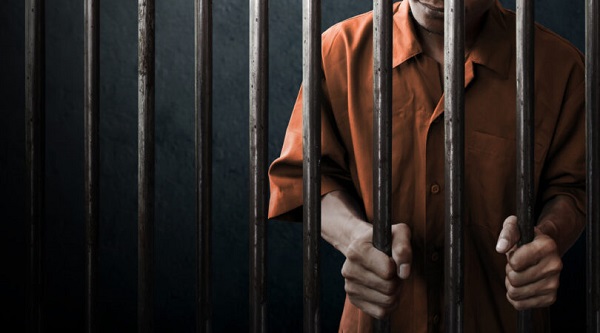Alberta
My European Favourites – One Day In The Bavarian Alps
My European Favourites – One Day In The Bavarian Alps
My favourite area of Germany is Bavaria. It’s the largest state, about one fifth the size of the country, and is located in the south-east of Germany. Bordering the Czech Republic and Austria, the state’s capital Munich is an easy place to fly into, and it is a great city to explore and enjoy, especially during Oktoberfest.

Hotel Wittlesbach and two buildings in Oberammergau with painted frescoes
Oberammergau, Germany
The Bavarian Alps are about an hour drive south from Munich, and one of my favourite places to stay is in the town of Oberammergau. You may have heard of the town as it is well known worldwide for its performance of the “Passion Play,” which is performed in the aptly named, Passion Play Theatre. In 1633, while the plague was rampant in Europe, the villagers promised to perform the play every ten years if no further deaths from the plague occurred in Oberammergau. The play details the suffering, death and resurrection of Christ. Their prayer was answered, and they kept their promise with the first play staged in 1634. The most recent performance was supposed to be in 2020, but due to the covid-19 pandemic, it has been moved to 2022.
Oberammergau is a compact place easily explored on foot. The Bavarian State Woodcarving School is located there, and there are shops where you can purchase everything from wooden toys to elaborate woodcarvings, including those of religious saints and crucifixes. As you walk through the town, you will see many buildings with painted frescoes (Lüftlmalerei) on their exterior walls with scenes from fairy tales, Bavarian folk themes, religious scenes and decorations that imitate architectural elements.
To be able to accomplish our sightseeing today we need to start with an early breakfast at one of the local hotels. One of my favourites is the Hotel Wittlesbach which is located right in the town centre and has been operated and owned by the Ternes family for many years. The hotel is full of the Bavarian charm you would expect, and the breakfast they offer is very good. We have stayed there many times over the years, and our groups love the hotel and location.

King Ludwig II of Bavaria’s Linderhof Palace and Neuschwanstein Castle
Mad King Ludwig II of Bavaria
Linderhof Palace is only a 15-minute drive away from Oberammergau and is the smallest of the three places or castles built by King Ludwig II of Bavaria. The Kingdom of Bavaria existed from 1805 until 1918, and the Ludwig’s Wittelsbach family ruled during the kingdom’s entire existence. In 1864, Ludwig became king at the age of 18. He had little interest in politics and soon began to spend his own wealth on personal projects, like three fairy tale palaces or castles. His spending and accumulating debt became such a concern by Bavaria’s political elite that they had a medical commission declare him insane and
incapable of reigning. A day later, he was on a walk with his psychiatrist, and they were both found dead; presumably drowned and floating in Lake Starnberg. Now that you know some of the story of King Ludwig II, we can talk about two of the three places or castles he built, Linderhof Palace and Neuschwanstein Castle. The third and largest building, the New Herrenchiemsee Palace, which will not be part of our day, was built on an island in Lake Chiemsee and was to be a copy of Versailles in France, but it was never completed.

Linderhof Palace, the Gilt Fountain and the Neptune Fountain
Linderhof Palace
Linderhof is the only palace that King Ludwig II lived to see completed, and it is located near where his father, King Maximilian II, had the royal hunting lodge. Ludwig went there many times as a child and was very familiar with the location in the Graswang Valley near Ettal.
Ludwig idolized the French Sun-King Louis XIV and wanted to emulate his grand palaces in Bavaria. Throughout the Linderhof Palace, you will find sun decorations as an homage to his idol and as a symbol of royal absolute power. Linderhof was initially intended to be Ludwig’s Versailles, but due mainly to an unsuitable sized area, it became a smaller project which was completed in 1886. During his construction of Linderhof, Ludwig purchased the much larger Herrenwörth island on Lake Chiemsee, and it became the new site to build his Versailles as Herrenchiemsee Palace.
The Linderhof Park is fun to explore and has a mixture of different garden designs, cascading waterfalls, fountains, and a large pond with a gilt fountain that jets water 25 meters in the air. As you walk through the park, you will find a swan pond, the Moroccan House, the Terrace gardens, a Temple of Venus, a Neptune fountain, a Royal Lodge, a chapel, a music pavilion, a Moorish kiosk, various parterres (level gardens with symmetrical patterns) and a grotto. The Venus grotto is an artificial grotto and theatre where Ludwig could sit in his small boat as it was gently rocked by a wave machine and watch his favourite operas by Wagner.
A ticket is required to tour the palace with a guide, but there are really only four rooms that served a specific purpose. The first room is the “Hall of Mirrors” which served as the main living room. Then there is Ludwig’s bed chamber, the dining room with a disappearing dumb-waiter, and the small audience chamber which was used by Ludwig as a study and not a room where he would see people. There are two “Tapestry Chambers” which serve no real purpose, and there are no real tapestries on the walls, but instead, there are canvas paintings made to imitate tapestries.
A visit to Linderhof is enjoyable mainly for the gardens and palace exterior, but you might as well see the palace interior if you are there. Near the parking area, there are shops where you can purchase your ticket to tour the palace, buy a souvenir or a snack. The Schloss Linderhof Hotel is there as well, but I would rather stay in Oberammergau.

Fussen Arena, Fussen’s colorful old town, plus the Abbey and Castle
Fussen
After spending the morning at Linderhof, we travel west for about an hour through winding mountain roads to the town of Fussen just north of the Austria border. Our hockey tours often go to Fussen to play at the BLZ Arena or Bundesleistungszentrum, which ever you prefer. The main arena is a fabulous structure with windows installed above the seating area offering natural light into the building and onto the ice surface. The hometown team, EV Fussen, nicknamed the Leopards, play in the U20 Deutsche Nachwuchsliga II. The BLZ complex also has a second arena, and surprisingly, a curling rink.
Fussen is at one end of the Romantic Road which is a 350 km tourist route with interesting towns, villages and sights. Wurzburg, in wine country, is at the other end and the medieval walled town of Rothenburg, just south of Wurzburg, is one the must stops on the road.
We will stop in Fussen for a couple of hours to explore the old town and have time for lunch. Fussen is an underappreciated town with medieval walls, baroque churches, a former Benedictine Abbey (St. Mang’s) and a museum with historical music instruments including violins and lutes. The interesting Fussen Castle has the unfortunate luck of being located on a few kilometers from one of the most famous castles in the world and gets no respect. With just a couple of hours in Fussen I’m walking directly to the old town’s pedestrian friendly cobblestone streets to find a nice place to have lunch. I don’t have a big sweet tooth, but I will try to make time to slip over to the Hotel Schlosskrone’s Konditorei Kurcafe for a nice dessert. The hard part at the pastry shop is deciding which one to have.

Hohenschwangau Castle and the scenic Bavarian Alps
Hohenschwangau Castle
Just a few kilometers from Fussen, you will find one of Germany’s top attractions- the Neuschawanstein Castle. When you arrive to the parking place, you will immediately see a mustard colored castle that is not as famous, named Hohenschwangau. King Maximillian II of Bavaria, Ludwig’s father, rebuilt this 19th century castle on the ruins of a previous castle which had been partially destroyed in various wars. The castle was restored to its original plans and became the summer residence of the royal family and a young Ludwig. The castle, which is now often overlooked by the larger Neuschwanstein Castle, can be toured along with the Museum of the Bavarian Kings. Unfortunately, our schedule does not allow time for it.

Mary’s Bridge, Neuschwanstein Castle entrance, lower courtyard and tower
Neuschwanstein Castle
Our goal today is to see the Neuschwanstein Castle before it closes. It’s a good idea to reserve your time online prior to arriving, especially in the busy season from May to September. After getting your ticket and tour time at the ticket office, you must get up to the castle courtyard on your own in time to join your tour. There are three ways to get up to the castle from the town; a walking path up to the castle that can take 20-30 minutes, horse carriages that take you most of the way up to the castle, and a shuttle bus that takes you up to the Mary’s Bridge (Marien Brucke). We will take the shuttle bus which costs a couple of Euros to the Mary’s Bridge drop off. The Mary’s Bridge offers a fantastic panoramic view of the castle and the valley below. Tourists flock here prior to or after touring the castle to take their most prized photo of the day.
After taking our photo, we still have to walk from the Mary’s Bridge on a paved path to the castle courtyard to join our English tour which takes about 35 minutes and ends, as most tours do, in a souvenir shop.
Despite its medieval look, Neuschwanstein was built in the 19th century and served no defensive purpose. It was built for one man, King Ludwig II of Bavaria, but unfortunately, he only spent eleven nights there. The original castle name was New Hohenschwangau Castle but was changed to Neuschwanstein Castle after Ludwig’s death. Neuschwanstein literally means “New Swan Castle” and was named after a character in one of Wagner’s operas, the Swan Knight.
In addition to being a big admirer of the French King Louis XIV, Ludwig was a big fan of the renowned composer Richard Wagner and was his patron. Many rooms in the castle were inspired by other characters in his operas, but sadly, Wagner never got a chance to see the castle as he died before its completion. The singer’s hall which occupies the entire third floor is adorned with characters from Wagner’s operas. The amazing woodwork in Ludwig’s bedroom took fourteen carpenters four years to complete. You will find that there is no throne room in the castle for Ludwig as the Throne Hall had not been completed by the time of his death. Although the fairy tale castle is one of the most photographed buildings in the world, tourists are not allowed to take photos inside the castle.
After our tour, we can slowly make our way down to the parking area and make our 45-minute drive back to Oberammergau where we can have dinner and enjoy the evening at an outdoor patio. Maybe tonight we will go to the Ammergauer Maxbräu in the Hotel Maximillian where they brew their own beer. That concludes a great day in the Bavarian Alps.
Explore Europe With Us
Azorcan Global Sport, School and Sightseeing Tours have taken thousands to Europe on their custom group tours since 1994. Visit azorcan.net to see all our custom tour possibilities for your group of 26 or more. Individuals can join our “open” signature sport, sightseeing and sport fan tours including our popular Canada hockey fan tours to the World Juniors. At azorcan.net/media you can read our newsletters and listen to our podcasts.
Images compliments of Paul Almeida and Azorcan Tours.
Alberta
Alberta Provincial Police – New chief of Independent Agency Police Service

Sat Parhar has been appointed as the first chief of the Independent Agency Police Service, marking the next step toward a new municipal policing option.
The appointment of a new chief for the Independent Agency Police Service (IAPS) marks the next step in giving municipalities a new option for local policing and builds on the work already underway for the agency to assume the police-like duties currently carried out by the Alberta Sheriffs. The IAPS will empower municipalities to adopt strategies that effectively respond to their specific safety concerns, enhancing public safety across the province.
Chief Parhar brings more than 25 years of policing experience, including senior roles with the Calgary Police Service, most recently as deputy chief. His frontline policing experience and deep understanding of Alberta’s complex and diverse public safety landscape positions him to lead the agency as it takes shape and begins its work as a new municipal policing option, keeping communities safe.
Once operational, the agency will strengthen Alberta’s existing policing model and complement the province’s current police services, which includes the RCMP, Indigenous policing services and municipal police. It will help fill gaps and ensure law enforcement resources are deployed efficiently to meet Alberta’s evolving public safety needs and improve law enforcement response times, particularly in rural communities.
“Appointing Chief Sat Parhar is a key milestone in Alberta’s plan to give municipalities a real choice in how their communities are kept safe. This is about building a modern police service that reflects the priorities of Albertans, strengthens local decision-making, and ensures every corner of our province, especially rural areas, can count on responsive, effective law enforcement. With his decades of experience and deep understanding of Alberta’s policing landscape, he is the right leader to bring this vision to life.”
“This appointment signifies a significant step forward in our efforts to establish a more robust, community-focused policing model that is better equipped to meet the unique needs of our local residents. Under Chief Parhar’s visionary leadership, we are confident that we will develop a modern, efficient police service that not only enhances public safety but also aligns closely with the priorities and values of Albertans. His experience and commitment are vital in shaping an IAPS that is responsive, transparent, and dedicated to fostering trust and collaboration within the community, ultimately ensuring a safer and more connected society for all.”
Chief Parhar’s immediate priorities will be to hire an executive team and commence organizational planning such as developing key recruitment, training and other operational policies. Chief Parhar’s appointment is the first step of many to establishing the IAPS.
“It’s an honour to take on this role and help shape a modern police service built for Alberta. My focus from day one will be on setting high standards for professionalism, building strong relationships with our partners and ensuring this service reflects the needs and priorities of the communities we serve.”
The Independent Agency Police Service was formally created through regulation following the passing of Public Safety Statutes Amendment Act, 2024. The agency will operate as an independent Crown corporation, and will be renamed the Alberta Sheriffs Police Service, with its head office located in Calgary. The IAPS will be operationally independent from the provincial government with civilian oversight, consistent with all police services in Alberta.
“When it comes to policing, municipalities like ours deserve a choice – especially when the current system leaves us disadvantaged simply because of our size. We look forward to learning more about what that alternative will look like once an Alberta police agency is fully established and the options are clear. For us, this is about fairness, sustainability, and ensuring municipalities have access to policing solutions that reflect both their needs and their realities.”
Quick facts
- The regulation establishes the IAPS Provincial Corporation and its governance structure including board of directors, board of director powers, financial responsibilities and accountabilities.
Related news
- Expanding municipal police service options (April 7, 2024)
Alberta
Pierre Poilievre – Per Capita, Hardisty, Alberta Is the Most Important Little Town In Canada

From Pierre Poilievre
-

 Crime2 days ago
Crime2 days agoNational Health Care Fraud Takedown Results in 324 Defendants Charged in Connection with Over $14.6 Billion in Alleged Fraud
-

 Health2 days ago
Health2 days agoRFK Jr. Unloads Disturbing Vaccine Secrets on Tucker—And Surprises Everyone on Trump
-

 Business1 day ago
Business1 day agoElon Musk slams Trump’s ‘Big Beautiful Bill,’ calls for new political party
-

 Business14 hours ago
Business14 hours agoWhy it’s time to repeal the oil tanker ban on B.C.’s north coast
-

 Censorship Industrial Complex1 day ago
Censorship Industrial Complex1 day agoGlobal media alliance colluded with foreign nations to crush free speech in America: House report
-

 International22 hours ago
International22 hours agoCBS settles with Trump over doctored 60 Minutes Harris interview
-

 Business14 hours ago
Business14 hours agoLatest shakedown attempt by Canada Post underscores need for privatization
-

 Energy14 hours ago
Energy14 hours agoIf Canada Wants to be the World’s Energy Partner, We Need to Act Like It








